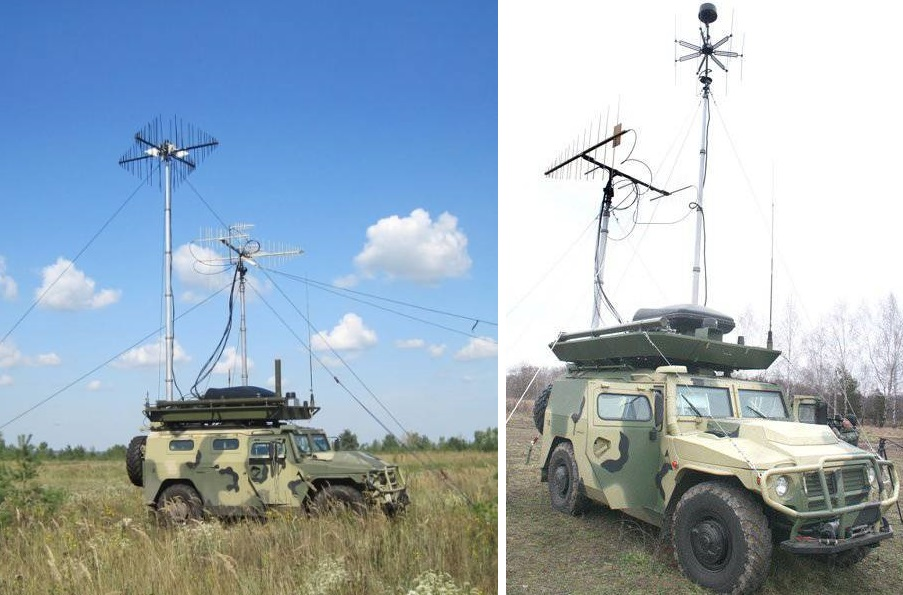Welcome back, aspiring cyberwarriors! In modern warfare, we’re dealing with a whole new battlefield—one that’s invisible to the naked eye but just as deadly as kinetic warfare. Drones, or unmanned aerial vehicles (UAVs), have completely changed the game. From small commercial quadra-copters rigged with grenades to sophisticated military platforms conducting precision strikes, these aerial threats […]
The post SDR (Signals Intelligence) for Hackers: Getting Started with Anti-Drone Warfare first appeared on Hackers Arise.
Welcome back, aspiring cyberwarriors!
In modern warfare, we’re dealing with a whole new battlefield—one that’s invisible to the naked eye but just as deadly as kinetic warfare. Drones, or unmanned aerial vehicles (UAVs), have completely changed the game. From small commercial quadra-copters rigged with grenades to sophisticated military platforms conducting precision strikes, these aerial threats are everywhere on today’s battlefield.
But here’s the thing: they all depend on the electromagnetic spectrum to communicate, navigate, and operate. And that’s where Electronic Warfare (EW) comes in. Specifically, we’re talking about Electronic Countermeasures (ECM) designed to jam, disrupt, or even hijack these flying threats.
In this article, we’ll dive into how this invisible war is being fought. Let’s get rolling!
Understanding Radio-Electronic Warfare
Jamming UAVs falls under what’s called Radio-Electronic Warfare. The mission is simple in concept but complex in execution: disorganize the enemy’s command and control, wreck their reconnaissance efforts, and keep our own systems running smoothly.
Within this framework, we have COMJAM (suppression of radio communication channels). This is the bread and butter of counter-drone operations—disrupting the channels that control equipment and weapons, including those UAVs.
How Jamming Actually Works
Let’s get real about how this stuff actually works. It’s really just exploiting basic radio physics and the limitations of receiver systems.

The Signal-to-Noise Game
All radio communication depends on what we call the signal-to-noise ratio (SNR). For a drone to receive its control commands or GPS signals, the legitimate signal must be stronger than the background electromagnetic noise.
This follows what’s known as the “jamming equation.” Here’s what matters:
Power output. A 30-watt personal jammer might protect just you and a small group of people, while a 200-watt system can throw up an electronic dome over a much bigger area. More watts equals more range and effectiveness.
Distance relationships. Think about it—the drone operator’s control signal has to travel several kilometers to reach the drone. But if we position our jammer between them or near the drone, we’ve got a much shorter transmission path.
Antenna gain. Directional antennas focus our jamming energy like a spotlight instead of a light bulb.
Frequency selectivity means we can target specific frequency bands used by drones while leaving other communications alone.
Types of Jamming Signals

Different situations call for different jamming techniques:
Noise jamming. We just sent random radio frequency energy across the target frequencies, creating a “wall” of interference.
Tone jamming transmits continuous wave signals at specific frequencies. It’s more power-efficient for targeting narrow-band communications, but modern systems can filter this out more easily.
Pulse jamming uses intermittent bursts of energy. This can be devastating against receivers that use time-based processing, and it conserves our jammer’s power for longer operations.
Swept jamming rapidly changes frequencies across a band. If the enemy drone is frequency-hopping to avoid us, swept jamming ensures we’re hitting them somewhere, though with less power at any single frequency at any moment.
Barrage jamming simultaneously broadcasts across wide frequency ranges. It’s comprehensive coverage, but it requires serious power output.
Smart Jamming and Spoofing
The most basic jamming just drowns out signals with noise. But the most advanced systems go way beyond that, using what we call “smart jamming” or spoofing.
Smart jamming means analyzing the source signal in real-time, understanding how it works, and then replacing it with a more powerful, false signal that the target system will actually accept as legitimate.
In the context of UAV operations, this gets really sophisticated. Systems can manipulate GPS signals to provide false positioning data, making drones think they’re somewhere they’re not—that’s spoofing. Even more advanced are systems like the Shipovnik-АЕРО complex, which can actually penetrate the UAV’s onboard systems and potentially take control.

What Actually Happens When We Jam a Drone
When we successfully jam a drone, what happens depends on what we’re targeting and how the drone is programmed to respond:
Control link jamming cuts the command channel between the operator and the drone. Depending on its fail-safe programming, the drone might hover in place, automatically return to its launch point, attempt to land immediately, or continue its last programmed mission autonomously.
GPS/GNSS jamming denies the drone accurate position information. Without GPS, most commercial drones and many military ones can’t maintain stable flight or navigate to targets. Some will fall back on inertial navigation systems, but those accumulate errors over time. Others become completely disoriented and crash.
Video link jamming blinds FPV operators, forcing them to fly without visual reference. This is particularly effective against FPV kamikaze drones, which require continuous video feedback for precision targeting.
Combined jamming hits multiple systems simultaneously—control, navigation, and video—creating a comprehensive denial effect that overwhelms even drones with redundant systems.
The Arsenal of Counter-Drone Electronic Warfare Systems
The modern battlefield has an array of EW systems designed specifically for detecting and suppressing drones. These range from massive, brigade-level complexes that can throw up electronic domes over vast areas to small, portable units that individual soldiers can carry for personal protection.
Dedicated Counter-UAS (C-UAS) Systems
The AUDS (Anti-UAV Defence System) is an example of dedicated C-UAS tech. It suppresses communication channels between UAVs and their operators with suppression distances of 2-4 kilometers for small UAVs and up to 8 kilometers for medium-sized platforms. The variation in range reflects the different power levels and signal characteristics of various drone types.

The M-LIDS (Mobile-Low, Slow, Small Unmanned Aircraft System Integrated Defeat System) takes a more comprehensive approach. This system doesn’t just jam—it combines an EW suite with a 30mm counter-drone cannon for kinetic kills and even deploys Coyote kamikaze UAVs. It’s literally using drones to fight drones.

Russian Federation EW Complexes
Russian forces have invested heavily in electronic warfare, including numerous systems specifically designed for drone suppression.
The Leer-2 system offers suppression of UAV communication channels at 4 kilometers for small UAVs and up to 8 kilometers for medium platforms. The Silok system is basically a mobile variant mounted on a Kamaz chassis, with a suppression distance of 3-4 kilometers, giving tactical units mobile EW capabilities.

The Repellent-1 system specifically targets UAV communication channels and satellite navigation, operating in the 200-600 MHz frequency range with a suppression distance of up to 30 kilometers.

Personal and Tactical-Level Counter-Drone Protection
Big systems are great for area defense, but the ubiquity of small drones has created massive demand for personal and small-unit protection. These portable devices focus on the most commonly used frequencies for commercial and modified commercial drones, providing immediate, localized protection.
The UNWAVE SHATRO represents cutting-edge personal counter-drone protection. Available in portable, wearable, and mobile versions, this system creates a protective bubble with a radius of 50-100 meters, specifically targeting guided munitions and UAVs operating in the 850-930 MHz range.

The UNWAVE BOOMBOX offers both directed protection (up to 500 meters) and omnidirectional coverage (100 meters), targeting multiple frequency bands critical to drone operations. By suppressing frequencies including 850-930 MHz, 1550-1620 MHz (GPS), 2400-2480 MHz (Wi-Fi/Control), and 5725-5850 MHz (Wi-Fi/Video), this system addresses the full spectrum of commercial drone communication and navigation systems.

Summary
This article examines the role of Electronic Warfare (EW) in combating unmanned aerial vehicles (UAVs), which rely on electromagnetic signals for operation. It discusses jamming techniques like noise, tone, and pulse jamming, along with advanced methods such as smart jamming and spoofing.
The invisible war for control of the electromagnetic spectrum may not capture headlines like kinetic combat, but make no mistake—it’s every bit as crucial to the outcome of modern conflicts.
The post SDR (Signals Intelligence) for Hackers: Getting Started with Anti-Drone Warfare first appeared on Hackers Arise.
Source: HackersArise
Source Link: https://hackers-arise.com/sdr-signals-intelligence-for-hackers-getting-started-with-anti-drone-warfare/